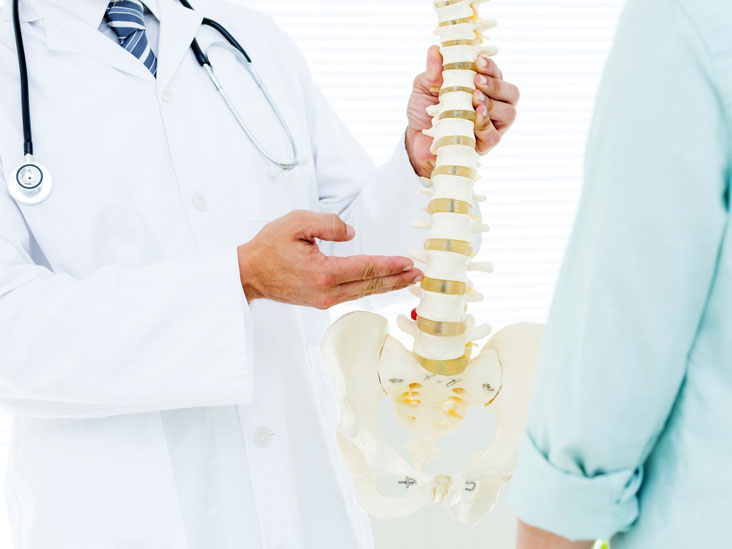Article reviewed and approved by Dr. Ibtissama Boukas, physician specializing in family medicine
What is the spine? What is his role? How to explain pain in the spine (inflammatory, mechanical and other types)?
This article covers everything you need to know about the spine (anatomy, physiology, and its link to back pain).
Spine Anatomy
Vertebres
The spine is the juxtaposition of bones (called vertebrae) superimposed on each other. Also called rachis, it is separated as follows:
- 7 cervical vertebrae
- 12 thoracic vertebrae (also called dorsal vertebrae)
- 5 lumbar vertebrae
- 5 sacral vertebrae (forming the sacrum, a small triangular bone at the base of the spine)
- 4 coccygeal vertebrae (fused)
Here is a visual diagram of the spine:
Between each vertebra, there is a intervertebral disc. These discs make it possible in particular to separate the vertebrae from the spine, in addition to providing shock absorption and mobility to the back.
The juxtaposition of vertebrae includes a free space of cylindrical shape. This is where the spinal cord passes, this nervous structure which constitutes a sort of extension of the brain all along the spine.
Muscles
The muscles of the spine allow the mobility of the neck and the back. Here is a list of muscles that have an insertion point on the spine:
- Rectus capitis posterior minor muscle
- Rectus abdominis posterior muscle
- Small rectus anterior muscle of the head
- Rectus capitis anterior muscle
- Superior oblique muscle of the head
- Inferior oblique muscle of the head
- Longissimus capitis muscle (small complexus)
- Longissimus muscle of the neck
- Semispinatus muscle of the head (greater complexus)
- Splenius
- Trapezius muscle
- longus capitis
- Muscle longus of the neck
- Scalene muscle
- Latissimus dorsi muscle
- Interspinous muscles
- Square muscles of the loins
- Paraspinal muscles
Ligaments
Ligaments provide stability to the spine by joining certain bones together. Here is a list of ligaments with insertion points on the spine:
- common vertebral ligaments (anterior and posterior)
- interspinous ligaments
- yellow ligaments
- interapophyseal ligaments
Physiology of the spine
How can the spine move? This is thanks to a complex joint system including the intervertebral discs, posterior interapophyseal joints, intervertebral ligaments and paraspinal muscles.
Allowed movements vary by region. For example, the cervical spine allows a lot of rotation compared to the lumbar spine. This makes it possible in particular to move the head from right to left. Together, the movements are in the following planes:
- Sagittal (flexion-extension, or front-back)
- Frontal (lateral inclinations, or on each side)
- Transversal (rotations around a vertebral axis)
Role of the spine
Here is a list of natural functions that the spine performs:
- Serves as a support for the head and maintains the gaze (cervical column)
- Serves as a support for the back and the entire human skeleton
- Transmits the weight of the body to the hips
- Protects the spinal cord and the vascular-nervous bundle
- Protects the heart and lungs thanks to its fixation with the ribs
Spinal pathologies (link with back pain)
Here is a list of pathologies involving the vertebrae of the spine. Most cause lower back pain:
- Compaction of vertebrae and osteoporosis
- Displaced vertebrae (this is a myth!)
- Sacroiliac pathologies
- Disc pathologies
- Cancer pathologies
- Fractures and other traumatic injuries
- Lumbar sprain, lumbago
- Scheuermann's disease
- Ankylosing spondylitis
- Rheumatoid arthritis
- Scoliosis
- Arthrose
- Degenerative disc disease
- Sacralization
- Lumbar
- Spina Bifida

